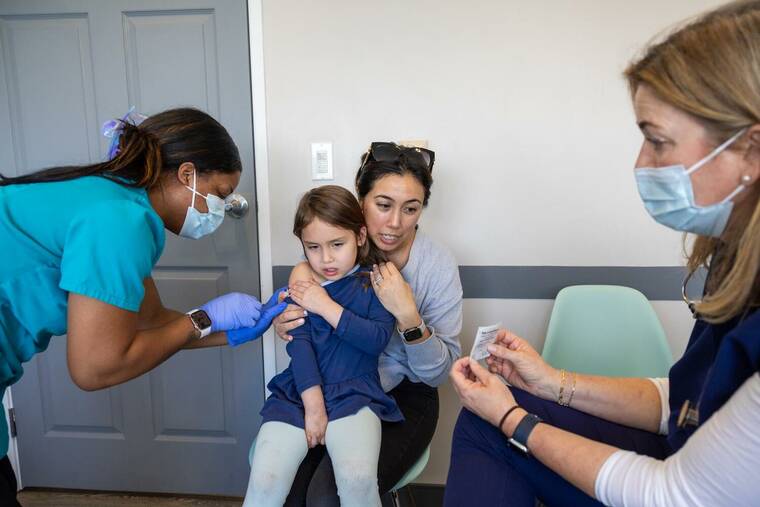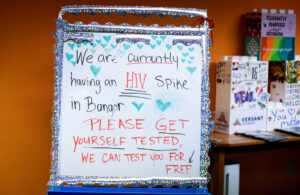
Vaccination rates for kindergartners in Hawaii remain below the national average, according to the latest data from the U.S. Centers for Disease Control and Prevention (CDC). Despite a slight increase from the previous year, coverage for routine childhood vaccines, including those for measles, mumps, and whooping cough, still falls short of the levels necessary to achieve herd immunity.
The state’s current vaccination rate for measles stands at 89.9%, well below the 95% threshold required for herd immunity. In the 2024-25 school year, vaccination rates for kindergartners were reported as follows: 91.5% for DTaP (diphtheria, tetanus, and pertussis), 92.6% for hepatitis B, 92.3% for polio, and 89.5% for varicella (chickenpox).
State Epidemiologist Dr. Sarah Kemble expressed concern over Hawaii’s inability to meet herd immunity standards, saying, “I’m encouraged that the numbers are going up. But we’re not seeing as much gain toward that herd immunity level as we would like to see in order to provide true protection to our population.”
Herd immunity, defined as the point at which sufficient individuals in a community are immune to a disease, is crucial for protecting those who cannot be vaccinated, particularly from highly contagious illnesses such as measles.
Increasing Exemptions and Public Skepticism
Hawaii’s rate of religious exemptions for vaccinations has increased slightly, from 5.3% for the 2023-2024 school year to 5.4% for 2024-2025. This trend aligns with national patterns where exemptions are also on the rise. According to the Kaiser Family Foundation (KFF), the growth in vaccine exemptions reflects a broader public skepticism regarding vaccine safety and effectiveness, exacerbated by misinformation and declining trust in health authorities.
These issues became more pronounced during the COVID-19 pandemic and have persisted in subsequent years. Robert F. Kennedy Jr., a notable vaccine skeptic and U.S. Health Secretary, is advocating for a reassessment of the federal childhood vaccination schedule, raising concerns about the influence of such views on public health.
While individual states establish their own vaccination requirements for students, many follow recommendations from the CDC’s Advisory Committee on Immunization Practices (ACIP). The Hawaii Department of Health (DOH) acknowledges that exemptions, combined with other factors, complicate efforts to reach the target vaccination rates for herd immunity.
Concerns About Measles Outbreaks
Health officials in Hawaii are particularly apprehensive about the potential for a measles outbreak due to the state’s low vaccination coverage. Earlier this year, an outbreak in Texas resulted in three deaths, including two unvaccinated school-aged children. Dr. Kemble noted the alarming situation, stating, “When you look at the outbreak that happened in Texas… that’s actually pretty close to that 95%, and yet they still have a major outbreak.”
Recent reports indicate that Hawaii recorded two travel-related cases of measles in April involving a child and a related household member, with no further transmission observed. However, a positive wastewater sample for the measles virus was detected on Hawaii Island in August, raising concerns about the virus’s potential spread.
Moreover, Hawaii has seen a surge in pertussis cases this year, with over 200 confirmed cases by summer compared to just 84 for the entirety of the previous year. Pertussis is highly contagious and spreads through respiratory droplets, making vaccination critical in preventing outbreaks.
The DOH reported that 20.7% of students statewide, nearly 40,000 children, are not up to date with required immunizations, which includes students with exemptions or incomplete vaccination records. The situation appears particularly dire among seventh graders, where over half, or 51.6%, are not up to date.
Dr. Kemble urged families to review their children’s vaccination records and collaborate with health care providers to ensure they receive all necessary immunizations. She stated, “Too many of our students remain unprotected against serious diseases like measles and pertussis.”
The DOH is actively working to address these challenges by reaching out to schools to provide science-based information on vaccinations. Hawaii has joined the West Coast Health Alliance, which includes California, Washington, and Oregon, to disseminate recommendations for vaccines informed by reputable medical organizations.
Efforts are underway to enhance vaccination rates through community engagement. The DOH’s Healthy Hawaii Partners Program plans to host over 350 clinics in schools this year, offering flu and COVID-19 shots, required school immunizations, and wellness checks. Last year, 47 such clinics were held, benefitting students, school staff, and the wider community.
As Hawaii confronts these pressing public health challenges, the DOH aims to be a trusted resource, encouraging open dialogue and education around vaccinations to protect the health of children and the community at large.





